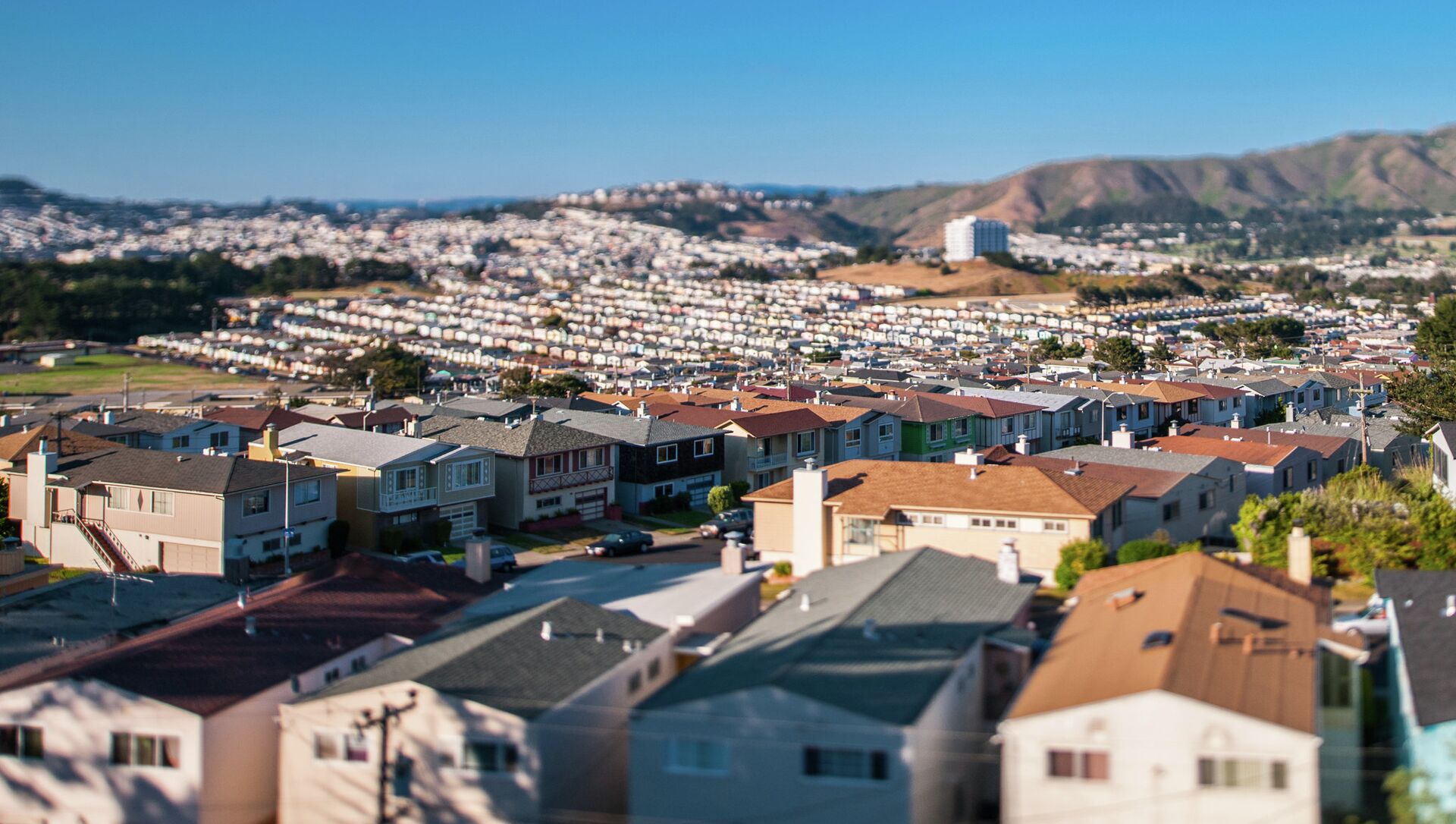US Home Prices Hit Record Highs in June, But Fewer Were Buying or Selling Amid Pandemic

© Flickr / WarzauWynn
Subscribe
According to a new report by S&P Global, US home prices increased by an unprecedented 18.6% in June, making it the third month in a row of steep price hikes. However, foreclosures have also begun rising in recent months and are expected to increase until the end of the year in the wake of the federal moratorium expiring.
Home prices continued to rise in June, reaching the highest single-month increase since S&P Dow Jones Indices began recording them in 1987. While some experts believe the spike is the result of purchases delayed by the COVID-19 pandemic, others suggest flight from city apartments is helping drive the boom.
"June 2021 is the third consecutive month in which the growth rate of housing prices set a record," Craig J. Lazzara, managing director and global head of index investment strategy at S&P DJI, told the Associated Press on Tuesday. "The last several months have been extraordinary not only in the level of price gains but in the consistency of gains across the country."
Lazzara further noted in S&P’s report that “this demand surge may simply represent an acceleration of purchases that would have occurred anyway over the next several years.”
“We have previously suggested that the strength in the US housing market is being driven in part by the reaction to the COVID pandemic, as potential buyers move from urban apartments to suburban homes. June’s data are consistent with this hypothesis,” he added.
Prices are high in part because so few homes are on the market. According to the Wall Street Journal, ultra-low interest rates have helped drive demand, but prices have increased so much that first-time homeowners are being scared out of the market.
"Rising prices during summer months reflect a combination of peak demand and larger homes for sale, as families with school-age children competed to secure a place for the new school year," Realtor.com Manager of Economic Research George Ratiu told US News & World Report. "In a noticeable shift, July also saw real estate markets welcome a larger influx of new listings, as homeowners across the country decided to move on with pandemic-delayed plans to sell."
Moreover, the demand isn’t as strong as it seems: despite the high prices, several real estate agents told the WSJ they were only getting a tiny fraction of the offers per house as they were before the pandemic. Even last week, two months after the S&P report, real estate firm Redfin reported to the paper that active listings on its site were down 23% from a year prior, while noting they were still about 16% higher than their lows back in March.
Foreclosures on the Rise
Another likely factor is that foreclosures on Americans’ homes have been accelerating in 2021 and are likely to get substantially worse before the year is out.
According to an August 10 report on the prior month by ATTOM Data Solutions, foreclosure filings are up by 40% since the beginning of the year, signaling an increasing number of property owners being forced to default on their mortgages.
Until the end of July, homeowners whose mortgages were backed by the US federal government enjoyed special protection from foreclosure via forbearance offered during the COVID-19 pandemic. However, as vaccination picked up and cases dropped off in the spring, the federal government looked to shed most of the pandemic-era social protections, including not only the moratorium on foreclosures, but also on tenant eviction and payment of student loans, among other programs.
According to the Mortgage Banker Association, at the beginning of August, 1.75 million federally-backed mortgages were in forbearance, with about 85% of them at least three months behind on their payments. Despite this, almost none of the $10 billion set aside in April for a Homeowners Assistance Fund to help homeowners pay off that debt has been distributed.
Unlike renters, who have been left with few options after the US Supreme Court threw out the eviction moratorium last week, homeowners have been given several methods to mitigate, slow, or avoid the onset of foreclosure proceedings after the end of the moratorium by the Consumer Finance Protection Bureau.
Rick Sharga, the executive vice president of RealtyTrac, a subsidiary of ATTOM, told Fox News on Tuesday that the moratorium’s end “won’t result in millions of foreclosures, but we’re likely to see a steady increase in default activity for the balance of the year.” He predicted that many of the foreclosures won’t be new proceedings, but resumed ones from before the pandemic that were put on hold by the moratorium.
However, Sharga also noted some of it would be “new foreclosure activity on vacant and abandoned properties,” or what are colloquially called “zombie foreclosures.” These happen when a family vacates a home right after they default based on the mistaken assumption that they must immediately do so when they receive a foreclosure notice. According to ATTOM, zombie foreclosures increased by 21% in the second quarter of 2021.
“The situation will probably fall somewhere in between mild and severe, at least in part because lenders may not want to be seen as grim reapers kicking vulnerable families out of their homes,” Todd Teta, ATTOM’s chief product and technology officer, told the Philadelphia Inquirer. “We will certainly find out over the coming year.”



